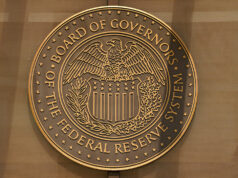Banks’ soured loans likely to climb in 2nd half
NONPERFORMING LOANS (NPL) will likely climb in the next few months, with local banks’ strong capitalization and regulatory relief measures seen helping the industry weather the crisis, Moody’s Investors Service said.
“We will likely see the problem loans materialize in the second half of 2020 to early 2021 with the lifting of the credit grace period,” Joyce Ong, analyst at the Financial Institutions Group of Moody’s, said in a briefing on Thursday.
“We think that the credit costs will continue to increase as more problem loans materialize, especially after the end of the credit grace period,” she added.
Banks’ NPL ratio inched up to 2.43% in May from 2.31% in April. The BSP said despite the pandemic, bad loans will not be worse than the peak 17.6% NPL ratio seen in 2002 after the Asian financial crisis.
Ms. Ong said support measures from the government will help banks amid the crisis. Among these, she noted, is the Bangko Sentral ng Pilipinas’ (BSP) move to reduce overnight reverse repurchase, lending, and deposit rates to record lows of 2.25%, 2.75%, and 1.75%, respectively.
Ms. Ong said the reduction in the reserve requirement ratios of big banks by 200 basis points (bps) to 12% and by 100 bps to three percent and two percent for thrift and rural lenders, respectively, will also support the sector.
She added that the BSP’s move to let banks tap their Basel III-mandated capital and liquidity buffers will also aid lenders during this time.
“We think that these measures will help to some extent but will not fully offset the downside risks of emerging markets from this coronavirus outbreak,” she said.
Amid expectations of slower loan growth ahead, Ms. Ong said big banks’ capitalization will remain stable over the next 12 to 18 months, noting the country’s banking system is among the strongest in terms of liquidity position.
The banking industry’s capital adequacy ratio was at 15.4% on a stand-alone basis and 16% on a consolidated basis at end-2019, beyond the 10% minimum required by the BSP.
Meanwhile, operating costs will dent banks’ profitability as they are more reliant on their physical networks, the Moody’s analyst said.
“Cost-to-income ratio for Philippine banks is the highest among ASEAN peers because they rely more heavily on physical operations,” she said.
Ms. Ong said while banks have been digitizing, it will take time for them to see returns, even as these will go “a long way” in helping them continue operations amid restrictions to prevent the spread of the virus. — LWTN



